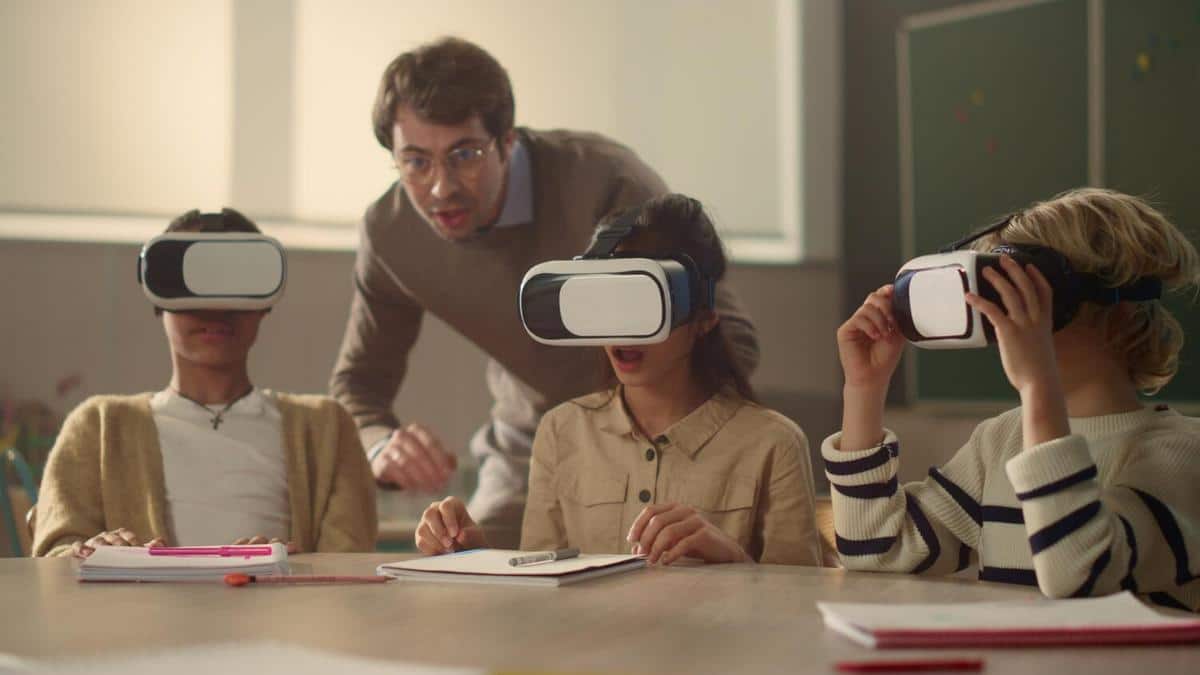
The Role of Virtual Reality in Online Classrooms
As virtual reality (VR) technology continues to evolve, its potential to transform various sectors becomes increasingly apparent. One area where VR is making significant strides is in online education, offering a more immersive and interactive learning experience.
The Transformative Power of Virtual Reality in Education
Virtual reality has the ability to revolutionize online classrooms by creating an engaging environment that traditional methods struggle to achieve. According to a report by PwC, VR learners are four times more focused than e-learning students, highlighting the potential of VR to enhance concentration and retention.
Expert Insights on VR in Education
A leading voice in educational technology, Dr. Emily Holt of the EdTech Research Network, emphasizes that VR provides students with “the opportunity to experience learning, not just absorb it.” This experiential learning can lead to deeper understanding and better application of knowledge.
Statistics and Research Findings
Research conducted by Statista indicates that the VR in education market is expected to grow to $700 million by 2025. This growth is driven by the increasing acceptance of VR as a tool for enhancing educational delivery.
Real-World Examples
Take the example of Oakwood Academy, which has integrated VR into its curriculum. Students can explore historical sites, conduct science experiments, and even embark on virtual field trips, all from the comfort of their homes.
Actionable Tips for Implementing VR in Classrooms
- Start small by incorporating VR in specific lessons or subjects to gauge student response.
- Invest in affordable VR headsets and software that are user-friendly and compatible with existing systems.
- Provide training for educators to ensure they can effectively utilize VR technology.
- Encourage feedback from students to continuously improve the VR learning experience.
Comparison Table: Traditional vs. VR Learning
| Aspect | Traditional Learning | VR Learning |
|---|---|---|
| Engagement | Moderate | High |
| Interactivity | Limited | Extensive |
| Retention Rate | Average | Enhanced |
| Flexibility | Fixed | Dynamic |
| Accessibility | Variable | Improved |
| Cost | Variable | Initial investment required |
| Preparation Time | Standard | Requires setup |
| Feedback | Delayed | Instant |
Frequently Asked Questions
How can VR improve online learning?
VR can make learning more engaging and interactive, helping students understand complex concepts through immersive experiences.
Is VR in education cost-effective?
While initial investments in VR equipment can be high, the long-term benefits such as improved retention and engagement can justify the costs.
Conclusion
Virtual reality is poised to play a pivotal role in the future of online classrooms. By offering immersive and interactive experiences, it not only enhances learning outcomes but also prepares students for a tech-driven world. As educators and institutions explore VR’s potential, embracing this technology could be a game-changer in the realm of online education.


